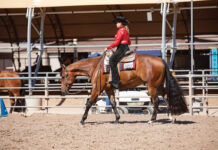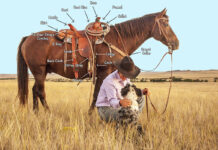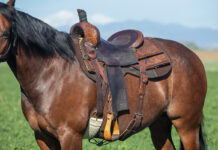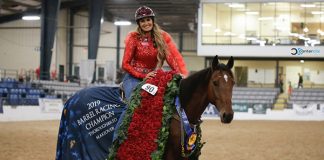That rush of adrenaline powers you through the cloverleaf pattern, knowing that just a hundredth of a second will make all the difference— every move must be flawless.
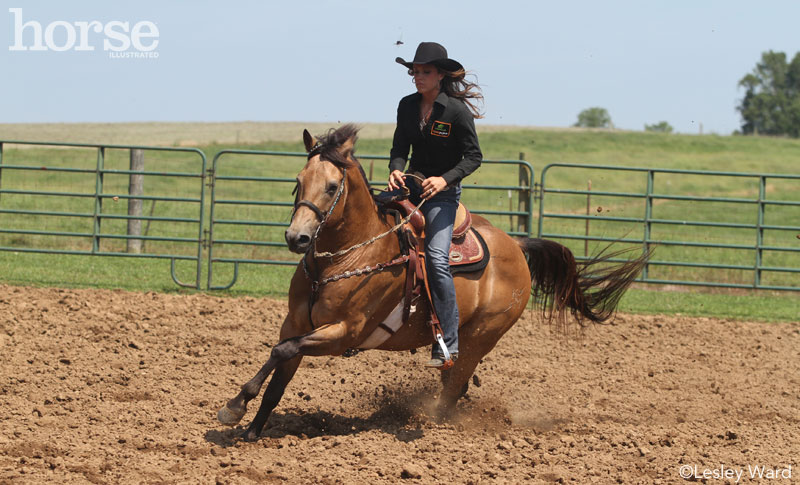
“Our sport is by the hundredth of a second, so I like to figure out how to make each run faster and more precise,” McLeod says. Here she offers her advice for four common problems barrel racers may face—a quick fix for a competition-day crisis, plus homework to work through the issue long-term.
CHALLENGE NO. 1: Knocking Barrels
When a barrel is knocked down during a run, it incurs a five-second penalty—more than most any rider can overcome. If your horse suddenly starts knocking down barrels during warmup or during your first go, here’s McLeod’s advice.
At the competition: McLeod says that knocked barrels are often caused by where you’re looking as you go into your pocket and turn. “You may be starting your turn too soon,” she says. “You need to replay the run in your head, examining where you looked and where you began your turn. Then, address where you’re going to look in your next run.”
Homework: If knocking barrels continues to be an issue, you need to work through it at home. “At home, there are several different tools you can use,” McLeod says. “If my horse is getting short, I’ll set a tire either in front or to the side of the barrel to naturally make the horse move over.”
McLeod explains that you never want to move your horse over in a turn, as that will cost you valuable time. Instead, establish a good foundation. “At home, I want to make sure I can do perfect circles at a walk, trot and a lope,” she says. “I use tools to help me do perfect circles, such as tires or cones. For a perfect circle, I don’t like to bend the horse’s nose into the circle a lot. I’d rather have him bent at the ribcage in the middle of his body. My inside leg is for him to turn around, and my outside leg keeps his hip underneath himself.
“I do perfect circles on and off the barrels,” she continues. “I don’t like to do the pattern all the time. I’ll draw a circle out and lope it. It takes time to learn to do it without [overusing] your hands. Start with a large circle, then learn to do a small one, and then you can do it around a barrel.”
CHALLENGE NO. 2: Amped Up
Most speed horses get excited at some point or another, but if your horse gets jittery at competitions and is hard to settle down, try these techniques.
At the competition: “A lot of horses feed off the rider, so the rider has to stay very calm and relaxed,” McLeod says. “Keeping the horse away from all the excitement can help too. You may need to warm up far away from the arena. Wait to take the horse up close to the arena till it’s your time to go.”
You can also slow down your warmup. For example, do a sitting trot and practice circles and figure 8s to get your horse’s mind focused, McLeod suggests. “It may take a while for your horse to relax and for his brain to start working. A lot of people cut that short. Each horse is different. Some horses require a longer, slower warmup. Make sure your horse is listening to you before you make the run.”
Homework: Horses that get too amped up may need to be hauled to many places and events to learn to adapt to the competition environment and to learn that it’s not all about running.
“Homework is a lot of hauling and preparation,” McLeod says. “If your horse is on the hotter side, you’ll have to do a lot of sitting on him and walking him up the alley of different barrel races. Do a lot of exhibitions and time-only runs where you can walk, trot or lope. The horse needs to know that it’s not all about going as fast as he can go.”
In addition, make sure you horse has his fundamentals to fall back on. “I always want to make sure my horses are extremely broke so that at any time during a run, I can ask them to shorten their stride or break down [to a slower gait],” McLeod says.
CHALLENGE NO. 3: No Brakes
A horse that won’t rate or slow down during his runs can be downright dangerous.
At the competition: “The quick fix is going to be tough,” McLeod says. “Before you go in, make sure your horse is responding to you. Break down the different gaits. If he’s really being strong in the bridle, do a lot of trotting, break down to the walk, stop and back up. Get to where you have a little control.”
Homework: “At home you need to do a lot of transitions using your body language,” McLeod advises. “If your horse is being strong, you have to go back to the basics. It takes a lot of time and repetition.
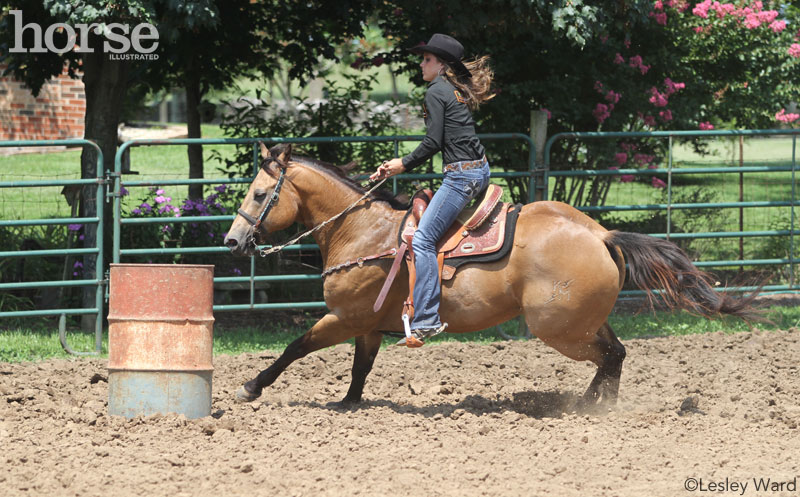
“When you sit down in the saddle, he should shorten his stride,” she continues. “I don’t necessarily want him to stop, but when I sit down, I want him to shorten his stride and come back to me so that I’m in control at any position during the run. If he doesn’t respond, then I’ll move to my hands and reinforce it. Eventually when I sit down in the saddle, the horse knows that means to come back to me and shorten his stride.”
Practice asking the horse to shorten his stride wherever you ride. “It can be done out in the pasture—it doesn’t have to be done around a barrel,” McLeod says. “Even loping straight, I’ll ask my horse to periodically shorten his stride and come back to me to make sure he’s paying attention at all times.”
CHALLENGE NO. 4: Wide Turns
We’ve all seen a super-fast horse blow it with a turn that’s just too wide. Tight turns are the key to a winning run.
At the competition: “With turns that are way too wide, it’s usually because the horse isn’t gathered up,” McLeod says. “Set up a barrel or trash can, and do some small circles in practice. Make sure the horse is gathered up and able to do that. Also, look at your approach. If your approach is too wide, your turns are going to be wide. Straight lines are the fastest. Go to the barrel straight, and be able to turn that small circle.”
Homework: To make tight turns, McLeod advises practicing perfect circles and making sure your horse can shorten his stride and gather himself up correctly.
“People don’t practice small, slow circles at home enough,” she says. “Do a 10-foot loping circle. That’s hard for a horse to do at first.” Practice the small circle off the barrels until you have it perfectly mastered.
Special thanks to Kelly Murphy-Alley and Buckshot for demonstrating the exercises in the article for our photos.
MICAELA MYERS is the author of The Horse Illustrated Guide to Trail Riding.
This article originally appeared in the June 2015 issue of Horse Illustrated magazine. Click here to subscribe!

